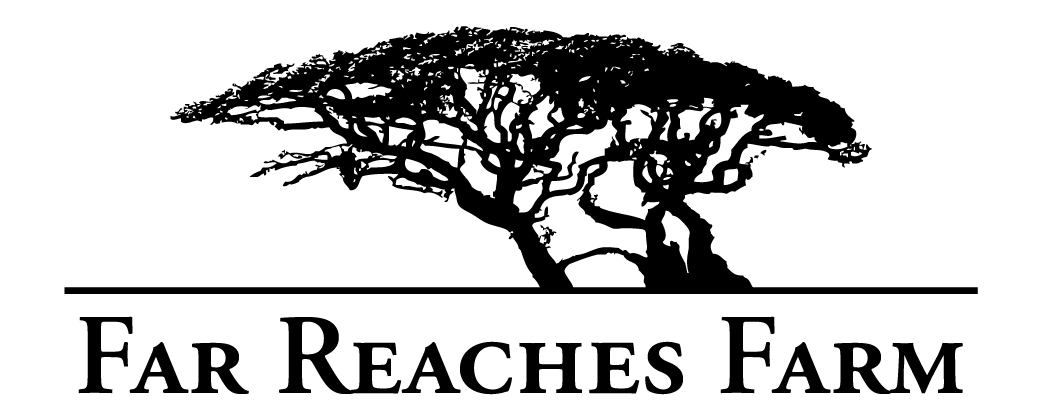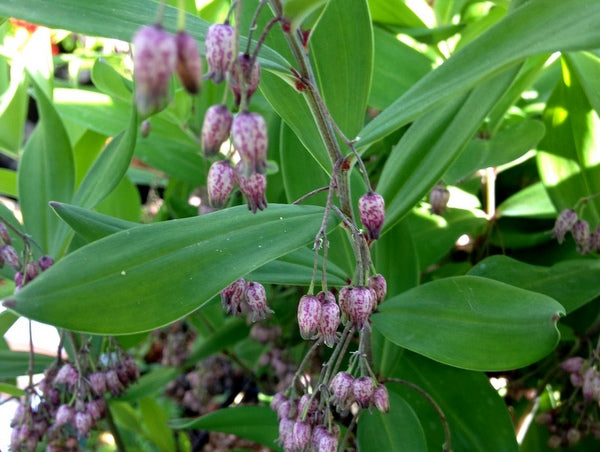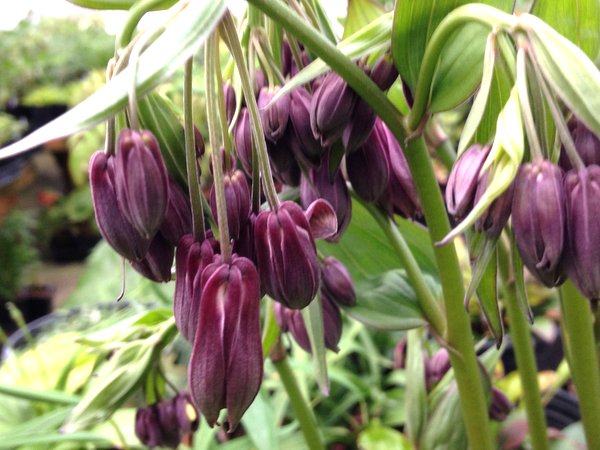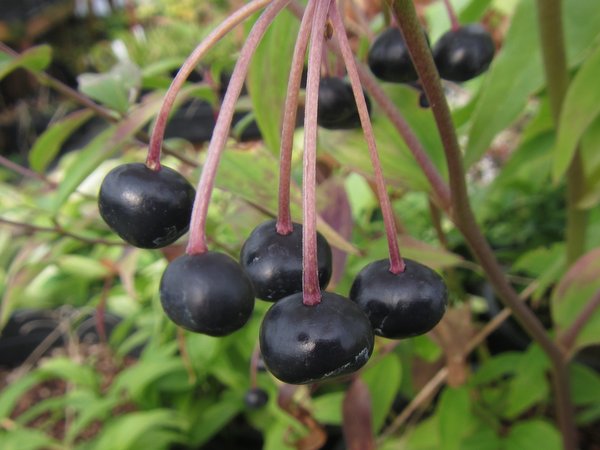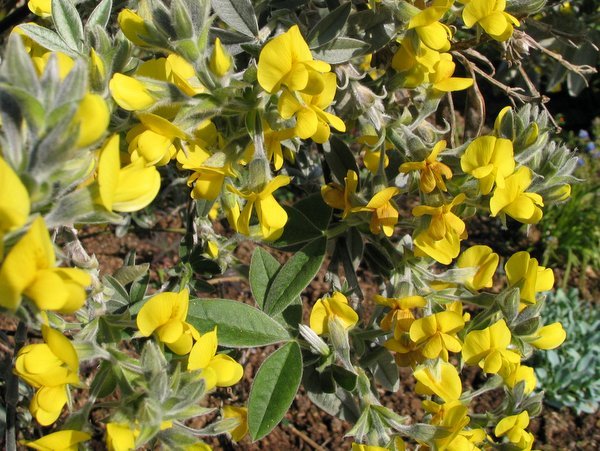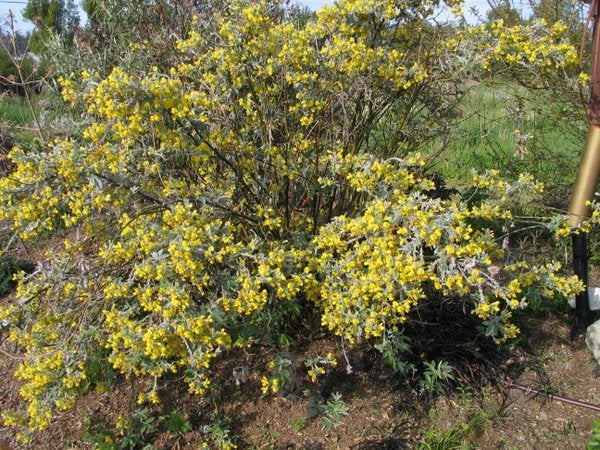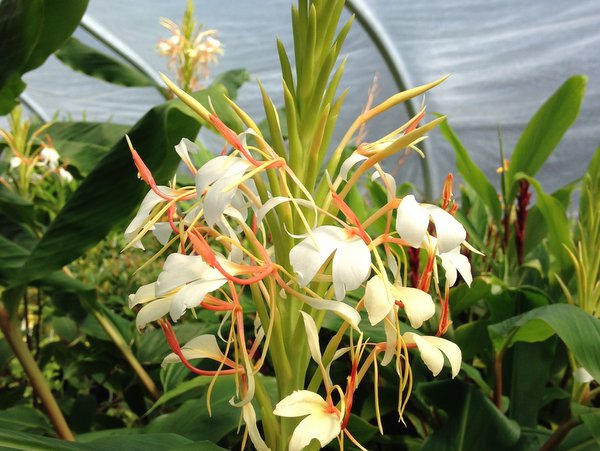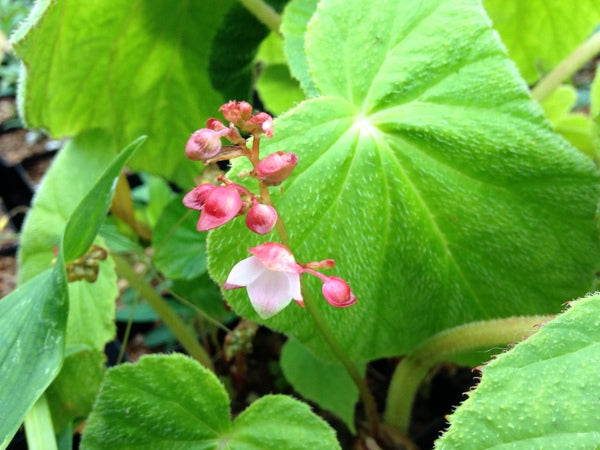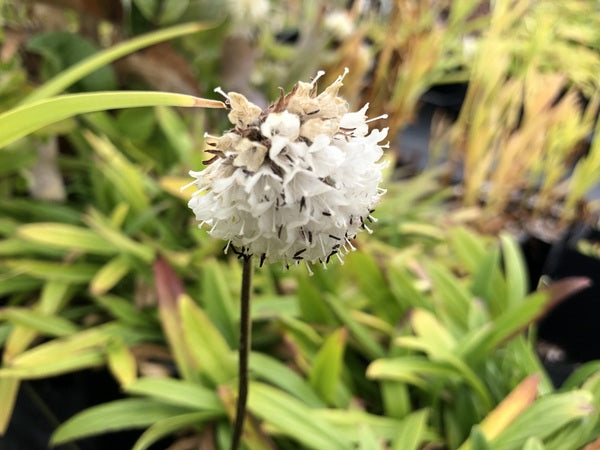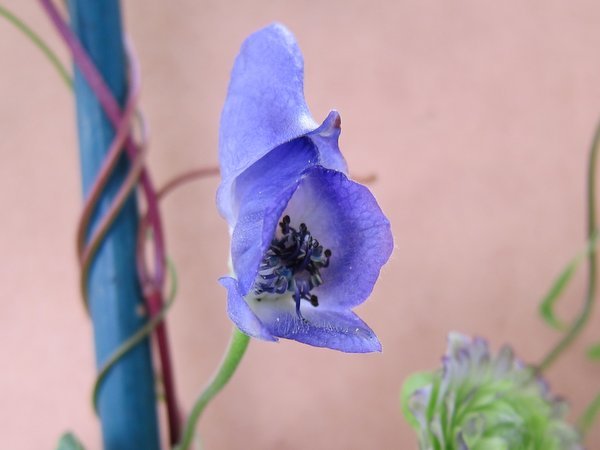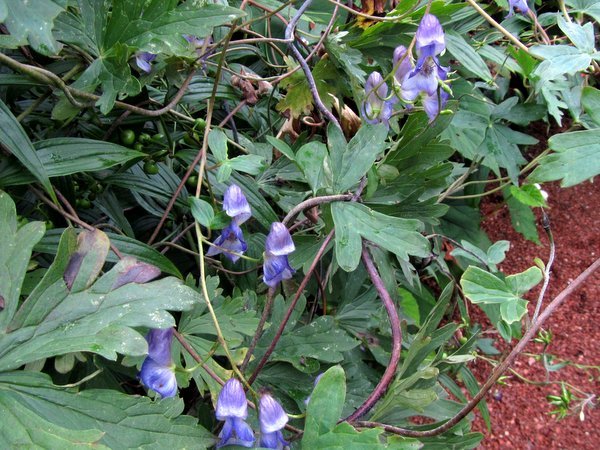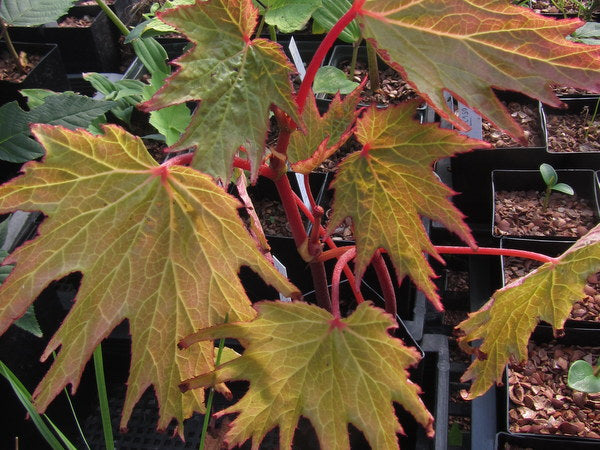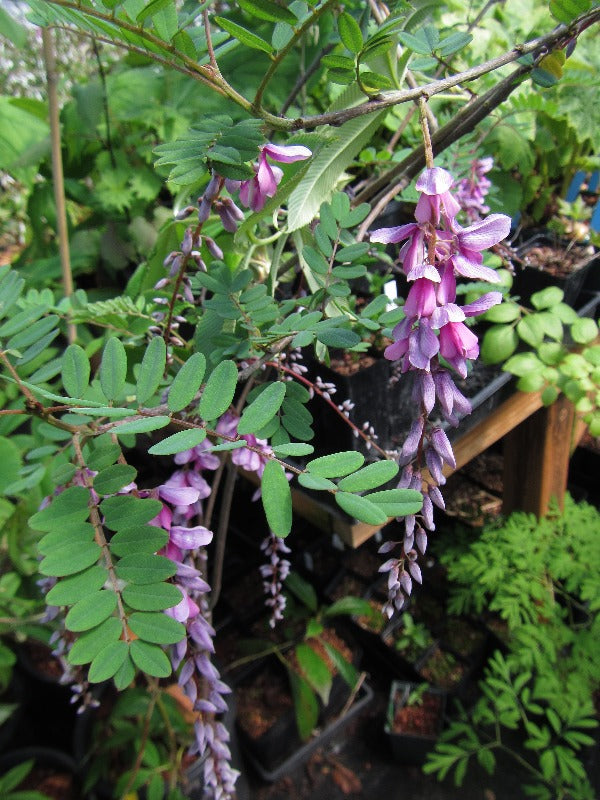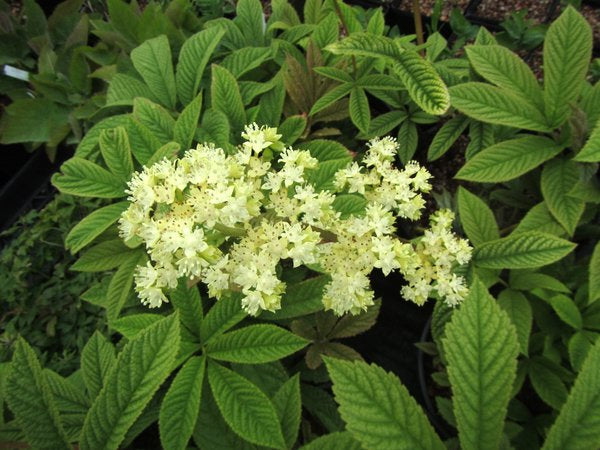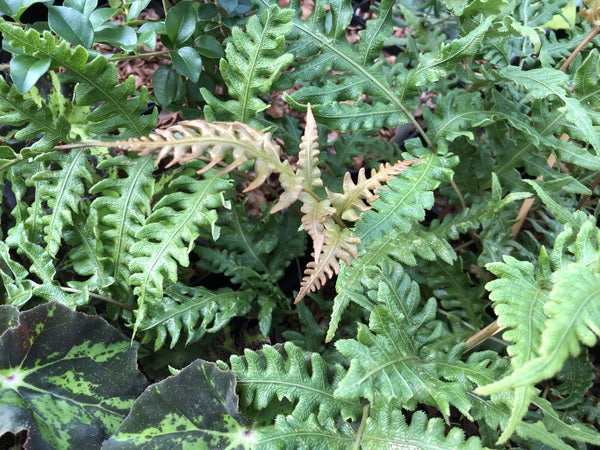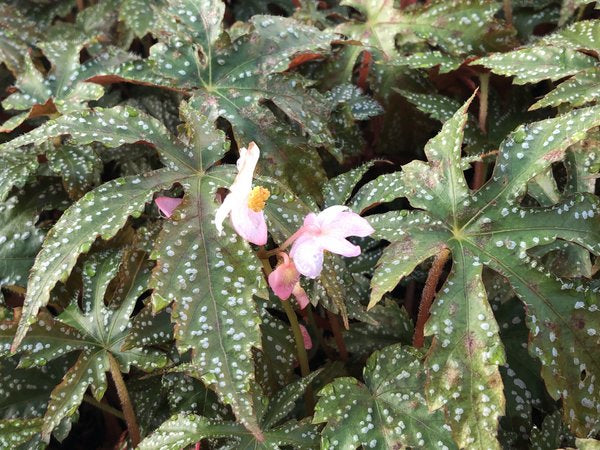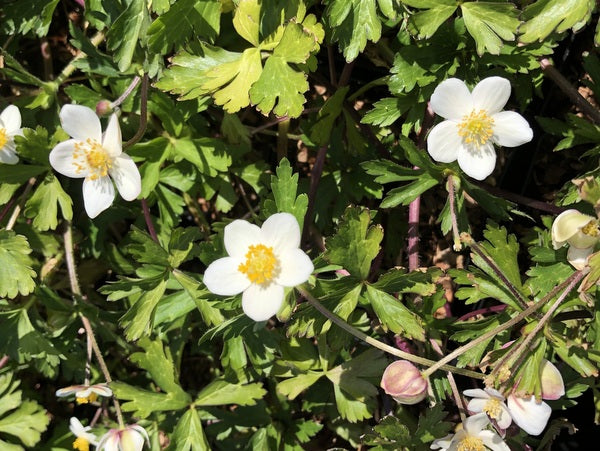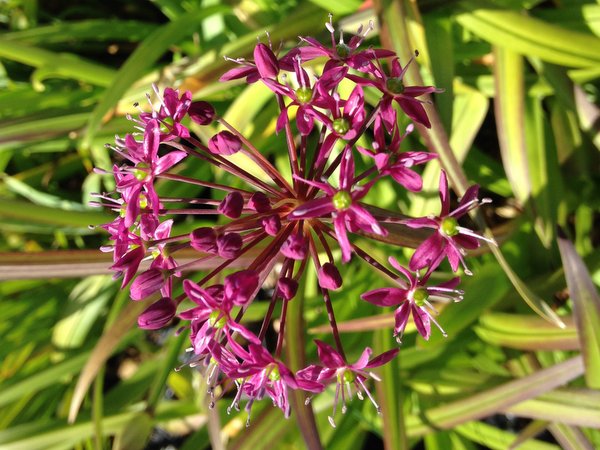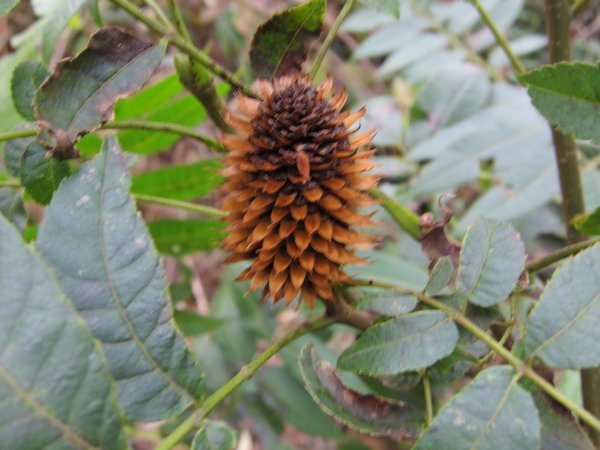Sort by:
452 products
452 products
Impish little species to a foot or so which looked unremarkable in the wild but blossomed - literally and figuratively - in the easy livin' at the nursery. Clusters of small white bells heavily marked in magenta dangle from long pedicels at the base of each leaf which is likewise fetchingly daubed in a small spot of bright maroon. A Far Reaches Botanical Conservancy Offering. Graceful and attractive.
Our Asian collection of this seductively compelling woodland species. All parts in all stages have a synchronicity of poised loveliness that binds the gaze to that moment slowing time and pace allowing one to absorb beauty be it a nascent unfurling, ornament of purplish bells, refinement of green or understated black pearls.
Our collection from Yunnan in 1997 of this cream of the crop higher elevation Piptanthus. Imagine our excitement seeing just 3 plants growing in a rubble outflow at the base of a steep hill after hours of walking across the valley of the Gang Ho Ba. Great silvery silken trifoliate foliage and large yellow pea flowers. This makes a multistemmed rounded shrub to 6' tall in our border. Most folks mistake it for a shrubby Argyrocytisus (Cytisus) battandieri until it blooms with flowers evocative of Laburnum. We've grown and killed several collections of the green-leafed P. nepalensis but this variety (which we have offered in the past as P. aff. tomentosus and much earlier as P. forrestii) is far hardier having withstood early November 14F with strong winds despite not being hardened off as the previous week had been in the 60's. Thanks to Grahame Ware for sharing recent research in the genus and hopefully nailing down the correct name. With botany however, never say never.
This is one had thought was Hedychium spicatum var. spicatum but are now thinking it is H. yunnanense. This is a much larger plant than any of our spicatum collections getting to over 5' tall and has a much larger and denser inflorescence packed with far more flowers - up to thirty. The flowers resemble spicatum in their shape and white and coral colors and the resultant orange-red fruit is also very similar.
Large green leaves stippled in evenly spaced pale hairs and small flowers pink in bud and on the reverse, opening to nearly white with the gentlest of pink touching the face. A rhizomatous species that has been hardy in mild PNW gardens especially if mulched in winter with something airy yet insulating. A Hinkley collection from China.
Oddity from the high alpine meadows of Tibet, China, Nepal and Bhutan which we have grown for a number of years. A tap-rooted species making clumps of narrow green leaves from which stems up to 2' arise in summer each bearing a single curious round head of closely packed small white flowers. A conversation starter for sure. This should be good to zone 5 given where it grows.
A collection by our friend Daniel Winkler of this Tibetan alpine meadow and streamside species found growing up to nearly 15000' . Nodding pale yellow flowers on a tall stem stem held well above the foliage, this was once described as var. luna due to its moonlight yellow flowers. This has proved a durable species here at the nursery carrying on year after year while more effete species quietly slink into oblivion.
A tuberous species allied to Begonia taliense and differing mainly in the shallow lobes of the leaves. This is native to SW Sichuan and the Zhongdian Plateau in Yunnan. This has reasonable hardiness as it grows up to 2600 meters and is excellent in zone 8 gardens especially if you winter mulch. A low and densely clumping species with bright pink flowers late in summer.
Codonopsis are curious things. These are herbaceous vining relatives of Campanula or Bellflowers and seem an unlikely expression of such. From an almost bulbous root arises several tendril shoots which love to twine into surrounding shrubs from which to display their 2" dusky lavender star shaped flowers. Usually the foliage carries a musky scent but true confessions, we can't remember if this species does writing this as we are in the middle of winter. An unlikely armature for such improbable and lovely flowers. Many species of Codonopsis are dug in the wild as their roots are eaten although we wouldn't encourage you to try it. There's carrots in the market after all. These are young plants but should flower this year.
Climbing Monkshood. This is from our seed collection on the Chongqing-Guangxi-Guizhou expedition in 2010. We found this on the summit of the previously unbotanized highest peak in the Wumingshan where it was clambering about on the top of the short scrub. We were struck by the large seed pods. Light to mid-blue flowers on stems that can reach 10'-15' on this vining Monkshood. This a widespread and variable species in China one we find most appealing.
Seedlings from this very good named form of the very variable Anemone obtusiloba which ranges at higher altitudes across the Himalaya into western China. Our mama plant came home with us from Scotland and is notable for larger blue flowers with 3-4 extra petals beyond the usual 5. We expect these youngsters to carry on the family tradition. Starts flowering early in spring with main flush in late spring but sporadic bloom during summer. A small species suited to a larger trough, rock garden or special spot in light shade.
What madness possessed us to make this esoteric cross between the usual maroon flowered species and the white flowered form? Consequences of a very liberal drug and alcohol policy is perhaps the best guess. Unflowered seedlings which will be either typical maroon pleianthum, typical white pleianthum f. alba or shades in between. We can definitively say the flowers will not be blue.
Our collection from the Gang Ho Ba in Yunnan at around 10000' back in '97 during our first plant hunting trip to China. This was growing in open woodland up against a massive rock the size of a dump truck with Arisaema consanguineum, Paeonia delavayi, Primula forrestii and Dipelta yunnanensis as companions. The big pinnate leaves were impossible not to notice. This has tall stems 36"- 44" with nice layers of white flowers.
We have just a handful of this choice form of the species in which the pinnae are distinctly undulated adding yet another layer of tasteful complexity to a species already awash in attributes. It really isn't fair to be born with gorgeous 6'-7' fronds but do you have to flaunt undulation too? Well, yes.
A Shayne Chandler collection from China of this most attractive species which has proven hardy in his garden as well as the equally mild garden at Heronswood both which are zone 8b. Lovely deeply lobed leaves liberally spotted in white and the late season pink flowers play well with the foliage. Mulch in winter zones 8a-7b and in colder areas, deeper mulch and using your microclimate siting to the max is advised until the hardiness limits of this species are better understood.
Our collection of a good dark violet-pink version of this widespread Asian Allium. A very easy plant in the garden getting up to 20" tall and having the added bonus of being edible should emergency rations be needed. We had originally described this as being light pink based on some pale October flowers lingering in the cold mists clinging to the mountain but fortunately these turned out different in a very positive way.
Curious and uncommon walnut relative from our Asian seed collection where we found this as part of the rich mixture of trees and shrubs on steep mountain flanks. Pinnate leaves harkening to the family Juglandaceae but instead of nuts in a hard shell, this has nutlets in vertical ornamental cones which persist all winter. Too cool for school! The small cones have very small and insignificant yellowish flowers in June and July but the value comes from the long winter interest.
